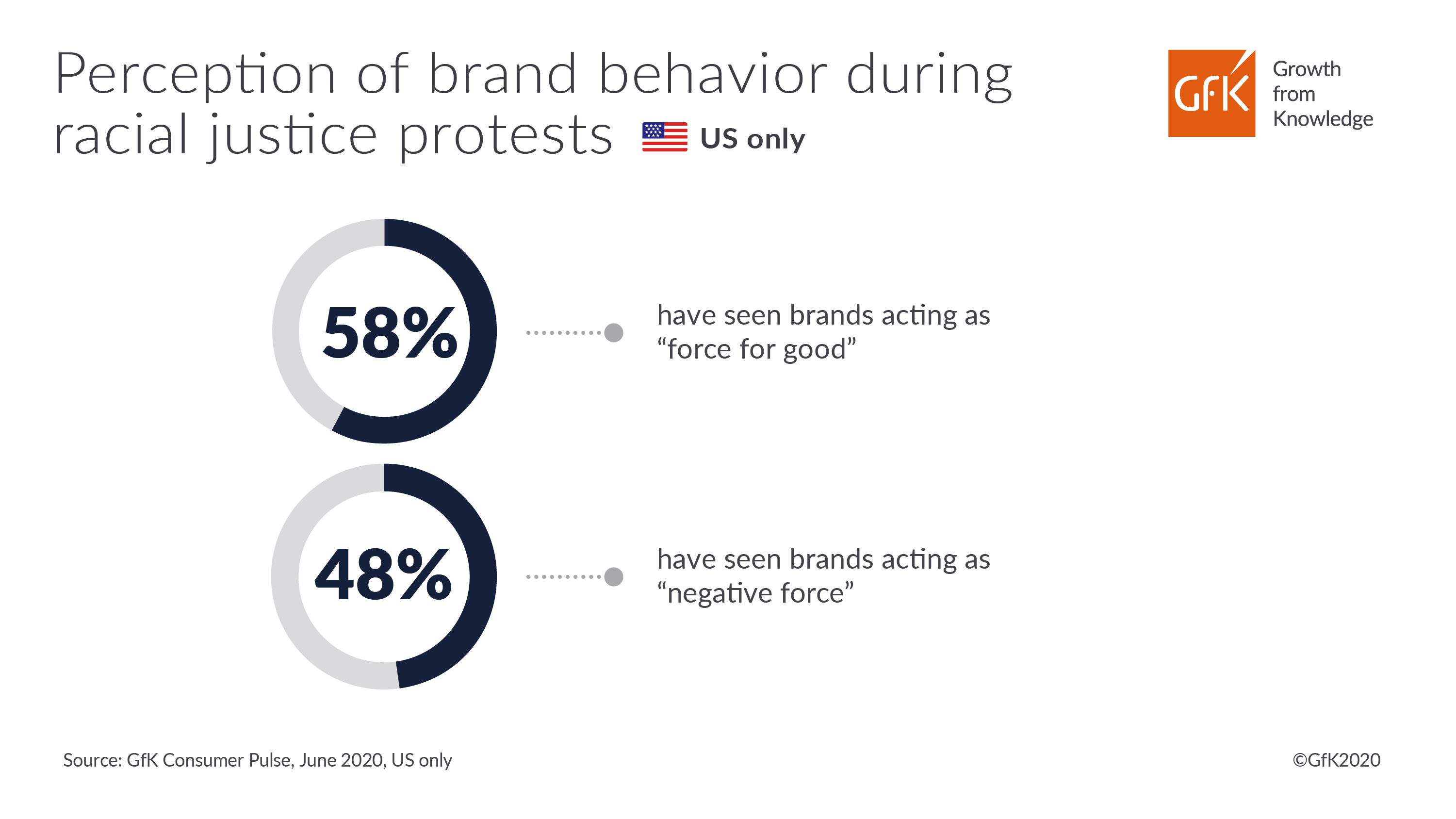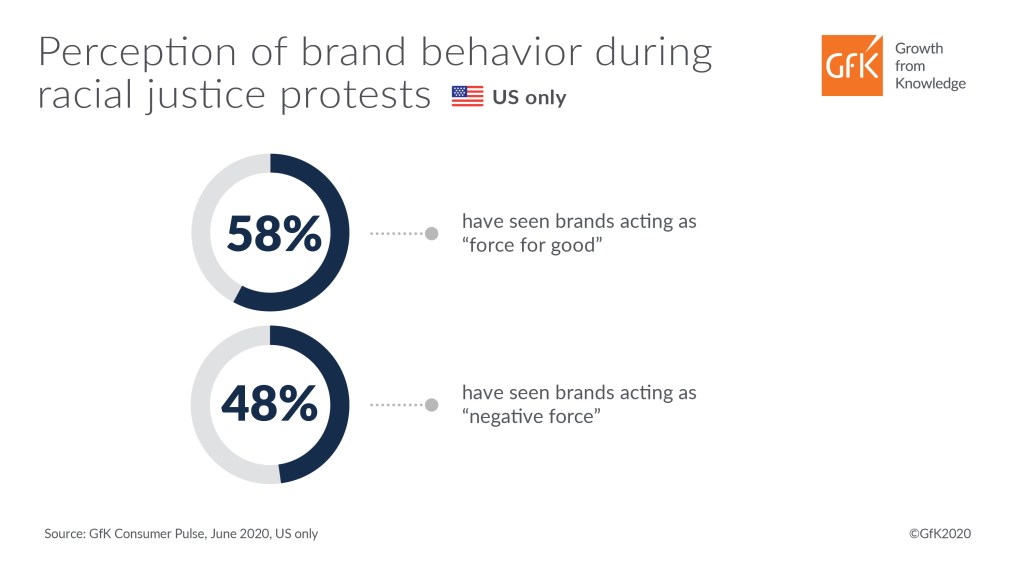The cultural earthquake that is 2020 has transformed the landscape of brand engagement. Often treated as an afterthought in marketers’ plans, social responsibility and brand purpose during crisis are now front and center for brands of every type. Messages about “difficult” or “uncertain” times have grown tired in a hurry; consumers want something more from the brands they support – and disappointing them would be a serious error.
During a time of crisis, lean into your brand purpose and identity
According to GfK research in June 2020, two-thirds of consumers believe that the way brands behave during the protests and riots will affect their desire to do business with those companies in the future. Among African-Americans, that percentage rises to three-quarters.
And while six in ten Americans say they have noticed companies acting as “a force for good” during the protests, nearly half also say that brands have served as “a negative force.” Ambivalence is rarely writ so large in consumer data.

Putting brand purpose front and center during the crisis
While all of this may sound like more pressure than the average brand can tolerate, the truth is that today’s heightened expectations actually present an opportunity for brands. Extreme circumstances sometimes give companies a new kind of freedom – to (re)discover their brand purpose during crisis and be something more than consumers have always known them to be.
Living out your brand purpose during a crisis is also a way to build trust with today’s wary consumers. GfK Consumer Life research shows that one-third of Americans say they only buy from brands that they trust. And younger consumers, in particular, want to see their favorite brands support the causes they themselves believe in; before the crisis, 65% of Gen Z women said they expected the brands they buy to support causes important to them.
The crisis factor as a brand guru
The COVID-19 pandemic and racial justice protests may have little in common – but both have disrupted comfortable brand relationships. During the virus crisis, for example, shoppers were forced to try unfamiliar brands, in a phenomenon we have called “accidental trial.” GfK’s National Shopper Lab is actively tracking whether these trial occasions become “repeats” – and seeing that, in many cases, brand loyalties have truly been reinvented by the pandemic.
Ad Age has been tracking brand responses to the COVID-19 and racial crises in separate blogs, celebrating stand-outs and noting some disappointments. Some of the brands that have succeeded by doing include
- Nike, which released a compelling anti-racism ad with the tagline, “For once, don’t do it”
- Pernod Ricard, which created an app that would identify hate speech on social media
- Disney, which embraced former NFL quarterback Colin Kaepernick as a content creator through his production company, Ra Vision
The crucial element is to find brand purpose and messaging during crisis that fit with the persona consumers already associate with you – and then put your commitments into clear, visible action. It may be true that not many brands can claim racial equality or virus fighting as central values or goals – but broader themes of supporting human good and needs may not be far removed from your existing identity.
In these difficult times, brands need to dig a little deeper, answering questions such as:
- How does your brand touch people directly? Can you leverage that contact for the greater good?
- Who are your core brand users – and what are their needs during the COVID-19 crisis?
- How have your employees been affected by the virus and the protests? Is there more you can do to help them?
In this extraordinary, possibly once-in-a-lifetime moment, brands have a kind of mandate to explore their social voices and perhaps redefine themselves at a grassroots level. For those that can stand the heat, and feel the passion to make a difference, now is a time to embrace brand purpose during a crisis as never before.




